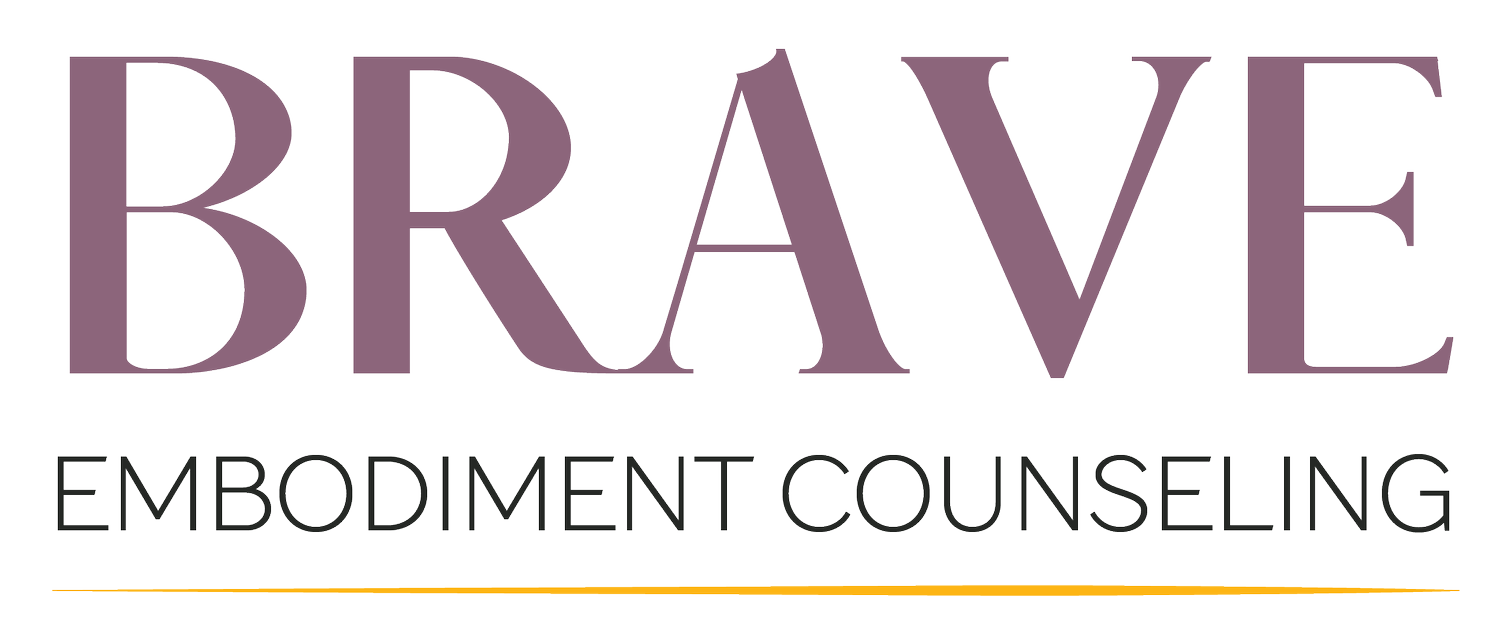What is EMDR?
Today we will be diving into the therapeutic technique called Eye Movement Desensitization Reprocessing (EMDR).
You may be asking yourself, "Um, what?" or maybe you've heard of it but still have no idea what EMDR actually is.
Either way, not to worry! We're here to break it down. We find its easiest to go word by word:
Eye Movement- Ever notice that when you're thinking hard or trying to make sense of something, your eyes begin to quickly move back and forth?
The founder of EMDR, Francine Shapiro, noticed this too.
Turns out, when you create bilateral stimulation (AKA you activate both sides of your brain) such as by making those eye movements, it becomes easier to work through difficult thoughts and emotions.
So, in traditional EMDR sessions, clients were directed (by a therapist's hands) to move their eyes from left-right at a predetermined speed to mimic that natural processing reflex we all have.
Turns out other types of bilateral stimulation such as sounds and sensations can create the same effect. So now, things like tapping, hand-held buzzers, and even music can be incorporated into a session.
Desensitization- As you begin the bilateral stimulation, you are also asked to target, or focus on, on a disturbing memory or sensation.
Part of what bilateral stimulation does is make it easier for you to handle really difficult thoughts and feelings. So as you focus on this target and continue the bilateral stimulation, the memories becomes less distressing to think about.
This begins the desensitization process.
Reprocessing-Did you know that traumatic memories are stored in a different part of the brain than "regular" memories?
Bilateral stimulation also allows you to move these traumatic memories from the fear center of your brain to where all of your other typical memories are stored. This is what "reprocessing" refers to.
This makes it so things like intrusive thoughts, constant triggers, and even changes in mood decrease. Because of this, reprocessing is also crucial to fully experience desensitization.
Through this process, traumatic memories that used to be tied with strong "emotional charges" and negative beliefs can transform into neutral recollections which you can make reasonable meaning out of. Ultimately, the goal of EMDR is to heal your mind rom the mental injury caused by a traumatic event.
Clients who have undergone EMDR therapy typically report outcomes such as:
Experience less distress when recalling certain memories
Decreased worry
Distancing effect (memories seem further away)
Increased sense of safety
Increased nervous system regulation
Want to read more about the effectiveness of EMDR? Check out these resources:
The Role of EMDR Therapy in Medicine
What Does an EMDR Session Look Like?
If you were to actually attend an EMDR session, what would that look like? Well, it depends.
For one, sessions can either last 60-90 minutes long.
On top of that, there are 8 Phases of EMDR Treatment. They are:
1. History and Treatment Planning
2. Preparation
3. Assessment
4. Desensitization
5. Installation
6. Body Scan
7. Closure
8. Reevaluation
Each phase has a standardized technique the therapist must follow.
Depending on the phase, you may simply be speaking with the therapist or engaging in bilateral stimulation.
The length of the process is dependent on the client and the memories they are targeting.
For a full breakdown of each phase and more info about an EMDR session, click here
Light Stream: A Guided Meditation
Find a comfortable place where you will remain uninterrupted for the next 10 minutes.
If it feels OK, go ahead and soften your gaze or close your eyes.
Next, envision your favorite color that represents healing.
Imagine that this favorite colored light is coming in through the top of your head.
As the light continues to pour in, allow it to gently and easily fill your entire head.
Perhaps it descends through your neck, into your shoulders, and down your arms into your hands and out of your fingertips.
Maybe it moves down your neck, into the trunk of your body, easily and gently.
What if it descends down into your hips, stream down your legs and flows out your feet.
Allow yourself to experience this healing light flow through your entire body, from the top of your head and out of your fingertips and toetips.
Spend a few more moments allowing your body to completely relax in this sense of peace and calm.
When you feel as though all tension has left your body, take a deep breath, gently wiggle your fingers and toes, and slowly open yours.
Enjoy this sense of calm for the remainder of the day, knowing you can revisit this healing color at any time.
Ready to try EMDR? Connect with us for a consultation at info@bravecounseling.com or 720-923-3033.
